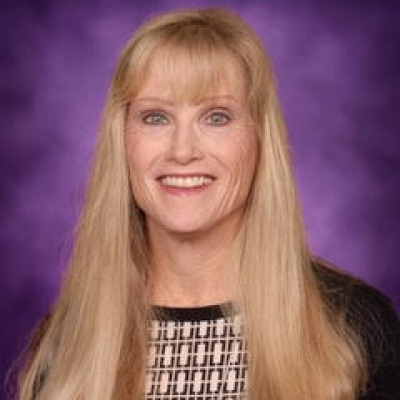This spring’s school closures have challenged us to look at many things differently and to be open-minded, creative, and brave about moving toward necessary change. As we consider reopening schools in the fall, let’s hold on to that mindset and ask what should special education become? Does the forty-five-year-old federal law (IDEA) need a thorough redo? We believe it does.
There is much to celebrate about all that public schools now provide for students with disabilities. We’ve certainly come a long way since 1975, when the law was enacted. Yet, especially as this crisis has revealed, special ed’s plethora of services, costs, and procedures have produced unintended consequences and missed opportunities.
At the start of the closures, Philip Howard’s USA Today discussion of cumbersome regulations included this: “Schools are a hornet’s nest of legal rules. Soon after New Jersey closed its schools...a parent of a special education student complained that it violated his rights.”
The parent was surely right. The closure also violated the “rights” of innumerable other students, with and without disabilities. Yet this parent was onto a key feature of our current quandary: While other students may have a theoretical “right” to an education, his child has a statutorily enforceable and uncapped entitlement! The crisis lays bare this difference.
Nationally, about 14 percent of today’s students—identified as disabled—are entitled by federal law to a “free appropriate public education” (FAPE). Nobody else is. Having an entitlement is a big deal because it ensures that a government program will provide eligible recipients (here, students with disabilities and their parents) with a specific set of services, rights, and other benefits—no matter the circumstances, school budget constraints, or what their peers get.
Now more than ever, this entitlement challenges schools. The national coronavirus crisis turned upside down the education of more than 50 million public school students, including 7 million with disabilities. Educators, students, and parents have struggled on a steep learning curve relative to distance learning, virtual classrooms, etc.
How can schools provide a FAPE for some while trying to innovate for all students? How are they supposed to implement burdensome special-ed regulations, including timelines and meetings, always working under the fear of litigation, during this trying period? Even before the crisis, special ed teachers spent much time on meeting bureaucratic requirements, leaving a reported 27 percent of their time for actual instruction. Many chose to leave the profession. One can only wonder what the crisis has been doing to teachers.
When schools reopen, we can expect that most students will have regressed in academics and other skills. (If they don’t, why have schools?) Schools will face this challenging reality as they work to support all students to catch them up and help them learn anew. Despite this reality, however, only special education students will be able to assert legal rights and file due process claims against their schools for compensatory services to make up for any regression, to say nothing of complaints for missed timelines, services, and other requirements. Schools expect a barrage of such claims.
Really? Yes, under current law.
Notably, special education is the only entitlement program in our public schools—rights that are enforceable through due process hearings and in court. Since 1975, Congress has wisely chosen not to create new entitlement programs in the K–12 realm.
Who are these students? The law was written to provide access to public education for students with severe and profound needs. Today, however, estimates are that those children make up only 10 to 20 percent of the students enrolled in special ed. The vast majority (estimated at 80 to 90 percent) of today’s students with disabilities have mild or moderate needs. They are educated mostly in general education classrooms. Yet the law, rights, and regulatory requirements for these two very different groups are the same.
In 2001, writing in Rethinking Special Education for a New Century, Tyce Palmaffy posed a key question: “The question of why learning disabled children are more deserving of extra help than everyday low achievers is one that LD advocates have never quite answered.” Nor has it been answered nineteen years later.
It’s also time to ask: Do students with full access to public education still need “protections”? And what about the law’s opportunity costs? For example, how can America’s prosperity and leadership position continue when so many other students, including advanced students, are underserved? How can we get teachers to focus on instruction instead of compliance? How can schools better spend scarce resources?
Yet the special education beat goes on. Even during this crisis, school administrators and attorneys spend inordinate amounts of time and effort on how to provide for special education students and how to comply with legal mandates when other students get far less than they should. Parents of special education students spend effort, often with great anxiety, to “fight” for their child against their public school, which the current statutory arrangement reinforces. These dysfunctional responses cannot be what the good folks who wrote this law had in mind.
This civil rights law was designed to provide individually-planned access to public education for students with disabilities—not to create a semi-separate system serving one subset of students. Regarding compensatory services for students with mild or moderate needs, if their parents, advocates, and attorneys prevail in demands for special services while their classmates do not receive any, how is that fair, equitable, or wise? It is not—and it’s not what this law intended. If and when that happens, public support for special education will surely decline. Most people understand crisis, fairness, and its opposite. Be careful what you wish for.
When this crisis abates, our world will look very different. The crisis has shed a bright light on many failings of American education, including inequalities, one of which is the inequitable distribution of rights and entitlements to education.
What to do? For starters, we believe it’s time to divide the special education student body into two very different groups: the far larger group of students who have mild and moderate needs and are mostly educated in general education classrooms and the smaller group who have profound and severe needs. In so doing, we take guidance from the Supreme Court’s 2017 decision, Endrew F. v. Douglas County School District. The Court highlighted the reality of two different groups of students with disabilities—those who are pursuing general education goals and those, generally with severe or profound needs, whose education is individualized according to their circumstances.
For the larger group, the entitlement has completed its mission of providing access to education and should end (or be capped or otherwise limited), especially as it has also become increasingly dysfunctional and has brought great opportunity costs. Instead, it is time to build appropriate systems for these students within one interconnecting mechanism referred to as “general education.” Students with mild or moderate needs should be served through quality, individualized regular education—as should all other students. Dispute-resolution avenues should be provided for all students.
Some may argue that, rather than extracting some students from an entitlement, all students should have one. We disagree. The last thing we need is more lawyers, lawsuits, regulations, and bureaucrats running our schools.
For the smaller group of students with more severe and complex needs, it’s time for a thoughtful taskforce to propose how to proceed. Should these students retain an entitlement, or is another approach to ensure services more appropriate? Should the law mandate that other social service agencies step up to serve students who often have complex and costly needs? Should their education remain a school district responsibility, or should the state, through other agencies, become a mandated partner?
In short, special education claims and rights that go beyond reasonableness and fairness, all exacerbated by this crisis, face us squarely. We can no longer ignore them. They present the opportunity to question the continuing need for the forty-five-year-old entitlement for millions of students with mild or moderate needs and to work to establish a better way forward for students with severe and profound needs.
When schools reopen, maybe, just maybe, we will finally confront the fact that it’s time to end or limit the entitlement for many students with disabilities and devise a system that is leaner, rational, equitable, and more effective for all students. It’s time to build anew.


